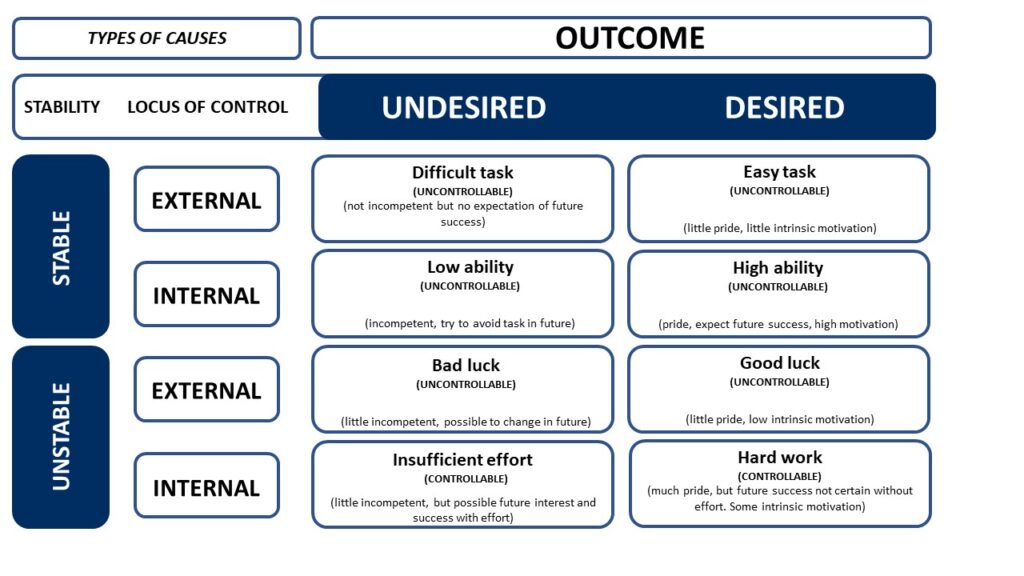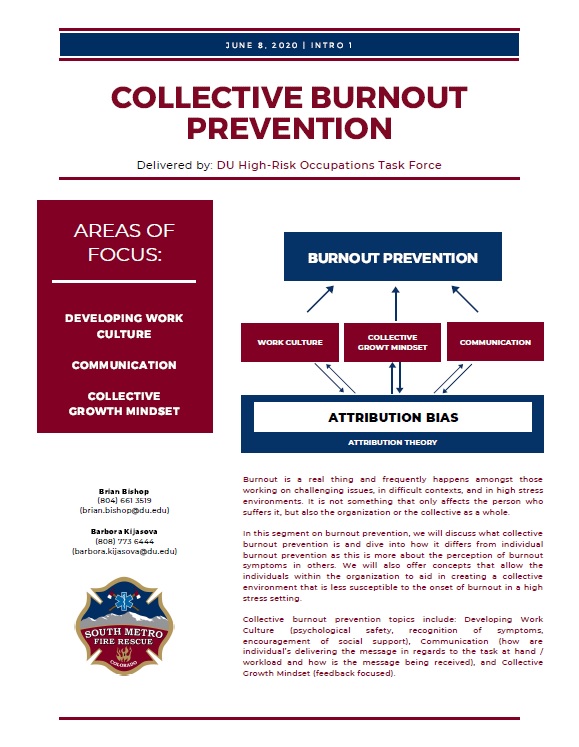lesson 1:
attribution bias
Downloadable handout:
Let's review Attribution theory
As we discussed in the Individual Burnout Prevention module, it all starts with our perception. The best way how to understand the ways we perceive events and their outcomes is through Attribution Theory. Let’s dive into Attribution Theory one more time, and make sure we understand it.
Attribution Theory explains how individuals interpret events and how this relates to their thinking, motivation, and behavior.
We perceive the events and their outcomes through lens of:
- stability (whether a situation/outcome change over time or not)
- controllability (whether you have control over a situation/outcome or not)
- locus of control (a situation/outcome is caused by external or internal factors)
Within these aspects are four components that individuals attribute the outcome of the situation to:
- effort
- luck
- ability
- task difficulty
Which one of these components is controllable? Yes, effort!
Why would it be important to focus on the controllable? How would it influence your motivation, mindset, and your coping after undesired situation/outcome?

Attribution biases (what we see is not always right)
Attribution bias is a cognitive bias that refers to the systematic errors made when people evaluate or try to find reasons for their OWN and OTHERS’ behaviors. The bias error comes into play when we make an assumption about others without having all the data we need to be accurate. There are two types of attribution bias that tend to show up in the work place. Fundamental attribution error and Self- serving bias. We will dive into those a little bit more below.
Fundamental attribution error
Fundamental attribution error is the tendency of an individual to assign blame or cause of something to the person themselves and does not take into account external issues. It is the tendency to overemphasize dispositional (internal) factors while negating or under-emphasizing situational (external) factors.
Self-serving bias
Why it matters?
When we attribute a bad day to external factors, we more likely give up on what we can control. This might lead us to a fixed mindset, avoidant/maladaptive coping, and low/external motivation (refer to Individual Burnout Prevention module).
Recognizing that someone having a bad day/week/month might focus on external factors and perceive them as uncontrollable will help you as a leader or a colleague create productive/supportive communication and provide growth mindset focused feedback towards that person.
A result? The person having a bad day/week/month will more likely shift their perception towards controllable, changeable aspects of their situation and will more likely adjust the situation itself.

